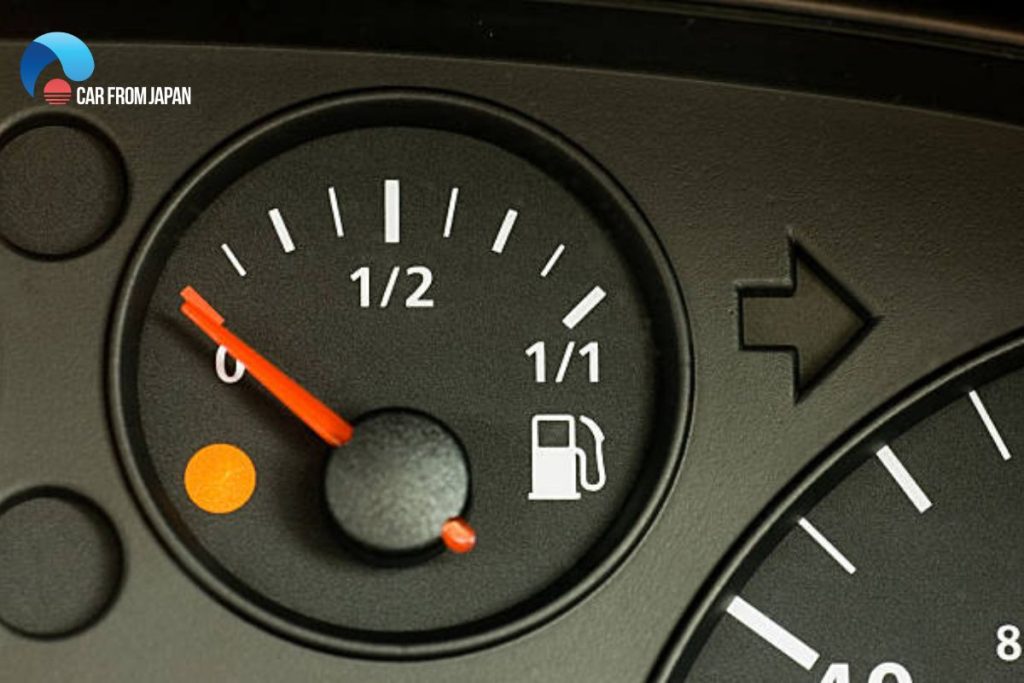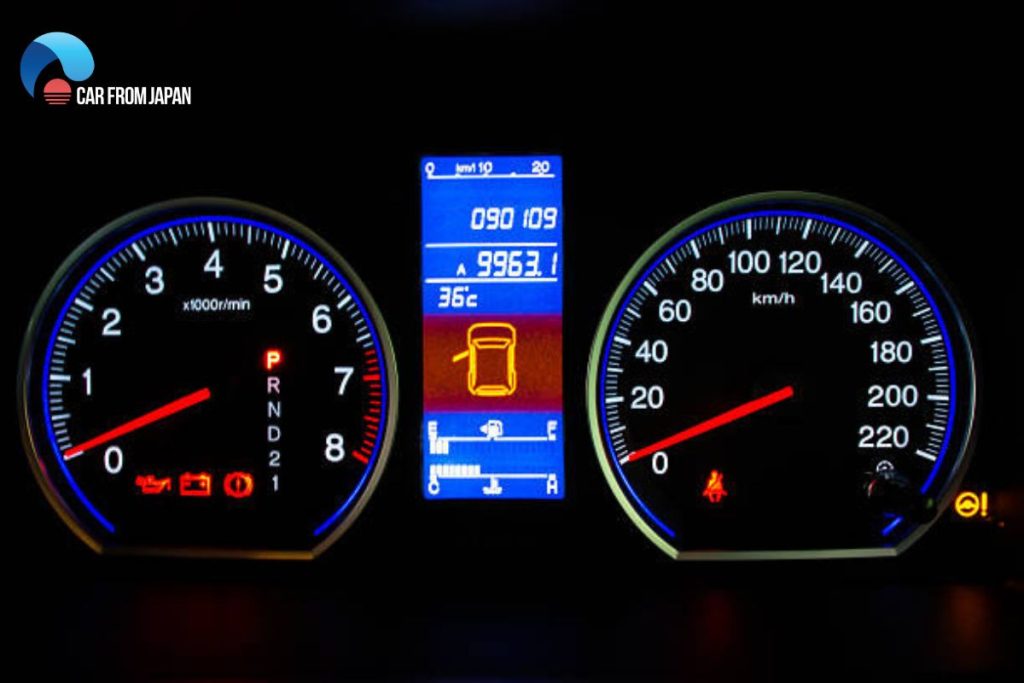Has your car’s fuel gauge started acting weird? One minute it’s full, the next it’s telling you you’re running on fumes, even if you know you have gas. An inaccurate fuel gauge can be a real headache and make you nervous about driving. So, what’s usually the problem when your gas tank and your dashboard aren’t on the same page? We’re going to break down the main reasons for your fuel gauge reading incorrectly.
Contents
- Fuel Gauge Reading Incorrectly: What Went Wrong?
- How To Identify The Problems With A Fuel Gauge?
- FAQs
- Can extreme temperatures affect the accuracy of a fuel gauge?
- Is it safe to drive with a faulty fuel gauge?
- Why does my fuel gauge fluctuate while driving even when the tank is stable?
- How much does it cost to fix a fuel gauge reading incorrectly?
- How often should I calibrate or check my fuel gauge for accuracy?
- Can a fuel gauge reading incorrectly cause damage to my vehicle?
- Conclusion
Fuel Gauge Reading Incorrectly: What Went Wrong?
A vehicle’s gauge system comprises three basic parts: gauge, circuit, and sender. A fault in these parts will cause gauge failure or make it give incorrect readings. The four ways in which a fuel gauge can fail are:
Sending unit failure
The most common reason for a fuel gauge not to work is. The gauge may read the voltage feedback from a dead sender as ‘Full’ or ‘Empty’.
The sending unit continuously moves and rubs on the variable resistor when you drive the car. The constant friction wears off the contacts, leading to their failure.

Problems with the circuit
Depending on the source of the trouble, there could be a voltage problem in the fuel sender, causing the gauge to receive no voltage response from there.
An interruption in the ground for either the gauge or the fuel sender might cause the issue, too. Other reasons could be corrosion or loose connections at the fuel pump module.
Gas gauge failure
A less common but not outright impossible reason. It could happen when the internal circuit is defective, shorted, or open.
There are 3 common issues with the gas gauge you should take a closer look at.
Problem #1: The gauge remains at the full mark even though you refueled a week ago and have been driving regularly. It’s not a sudden boost in fuel efficiency; it’s more likely an issue with the variable resistor.
This problem could stem from faulty wiring, an open circuit in the resistor, or in rare cases, a malfunctioning gauge.
Problem #2: The gauge is stuck on empty, despite knowing you recently refilled your tank (confirmed by your bank statement).
This issue typically arises from one of several causes: the float may have become detached from the metal arm, rendering it unable to provide fuel level information.
The variable resistor might be malfunctioning, or corrosion in the system’s wires could disrupt the information transmission.
Problem #3: The gauge fluctuates between full and empty seemingly without any pattern. Does it feel like you’re constantly guessing your fuel level?
This issue often results from the float getting stuck in place and then jolting back into motion due to the car’s movement, leading to erratic readings. Alternatively, a faulty gauge itself could be causing this inconsistency.
Non-functioning instrument cluster
The least common of all causes and its repair is the most expensive. Most modern vehicles have a fully integrated circuit. So, when one part fails, the whole unit needs replacement.
How To Identify The Problems With A Fuel Gauge?

For amateurs, contacting a professional mechanic is the best option. But, if you have previous experience, it is easy to find out the issues with the fuel gauge reading incorrectly with these tools:
- A digital multimeter (DMM)
- An electrical wiring diagram (EWD)
- Basic hand tools
Carry out the following tests to identify the source of fuel gauge reading incorrectly.
Instrument cluster self-test: The procedure involves doing a series of tasks, including switching the headlight on, pressing the odometer button, etc.
The task sequence could be different for older vehicles. You need to check the owner’s manual to know the correct order.
Fuel sender test. Conduct the test when the tank is lower than half to avoid splashing hot oil. Use the multimeter to check for voltage on the pins, and it has to be 5 V or 12 V on one pin.Gas gauge test. This inspection involves another voltage testing, and the reading has to be exactly the same as the fuel sender test.
FAQs
Can extreme temperatures affect the accuracy of a fuel gauge?
Yes, extreme cold or hot temperatures can impact the accuracy of the fuel gauge temporarily. However, the gauge should return to normal when the temperature becomes more moderate.
Is it safe to drive with a faulty fuel gauge?
It’s not recommended to drive with an inaccurate fuel gauge, as you may run out of fuel unexpectedly. It’s safer to rely on your odometer and refill your tank based on mileage until the gauge issue is resolved.
Why does my fuel gauge fluctuate while driving even when the tank is stable?
Rapid fluctuations in the fuel gauge needle while driving can be caused by a loose wire connection, a faulty gauge, or interference from other electrical components. It’s important to have it checked to ensure accurate readings.
How much does it cost to fix a fuel gauge reading incorrectly?
The cost of fixing a fuel gauge can vary depending on the root cause of the problem. It could range from a relatively inexpensive fuse replacement to a more costly sender unit or instrument cluster repair.
How often should I calibrate or check my fuel gauge for accuracy?
You don’t typically need to calibrate your fuel gauge manually. If you suspect it’s reading incorrectly, it’s best to address the issue as soon as you notice it rather than relying on regular calibration.
Can a fuel gauge reading incorrectly cause damage to my vehicle?
While a fuel gauge reading incorrectly itself may not damage your vehicle, it can lead to running out of fuel unexpectedly, which can cause inconvenience and potentially leave you stranded. It’s essential to address the issue promptly.
Check out this video from car PROblems to learn more about the most common causes of fuel gauge malfunctioning!
Conclusion
Don’t let a faulty fuel gauge stress you out or leave you stuck on the side of the road. Now you know the main things that can go wrong, from a bad float in the tank to an electrical glitch. The best thing you can do is get it checked out by a professional. Driving with a broken fuel gauge isn’t just annoying; it can be unsafe. A quick fix can restore your peace of mind and help you avoid running out of gas at the worst possible moment.



